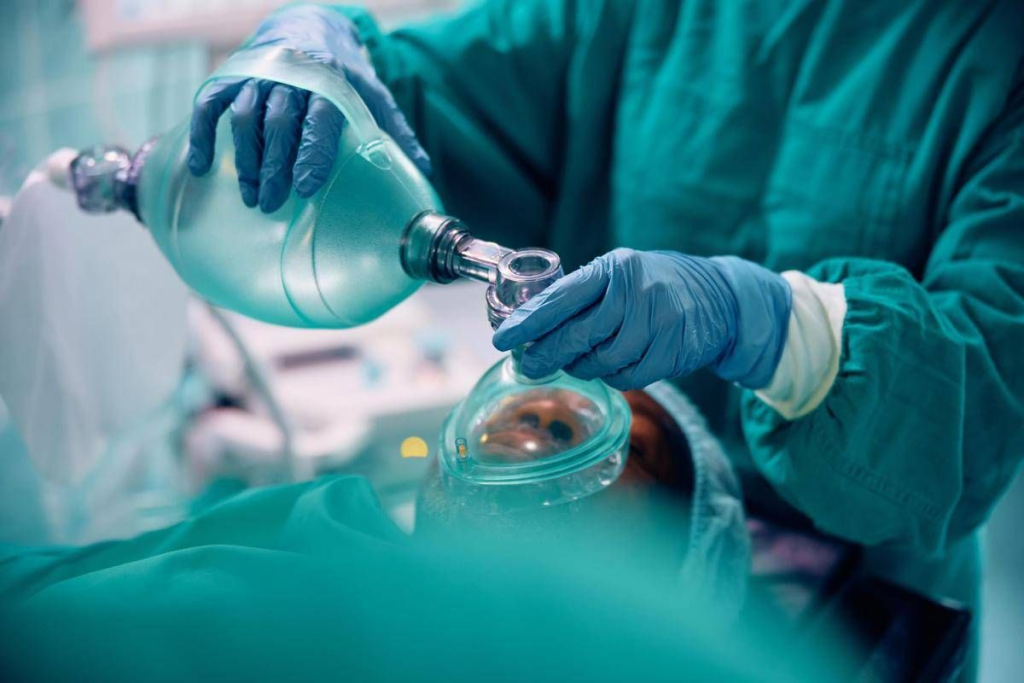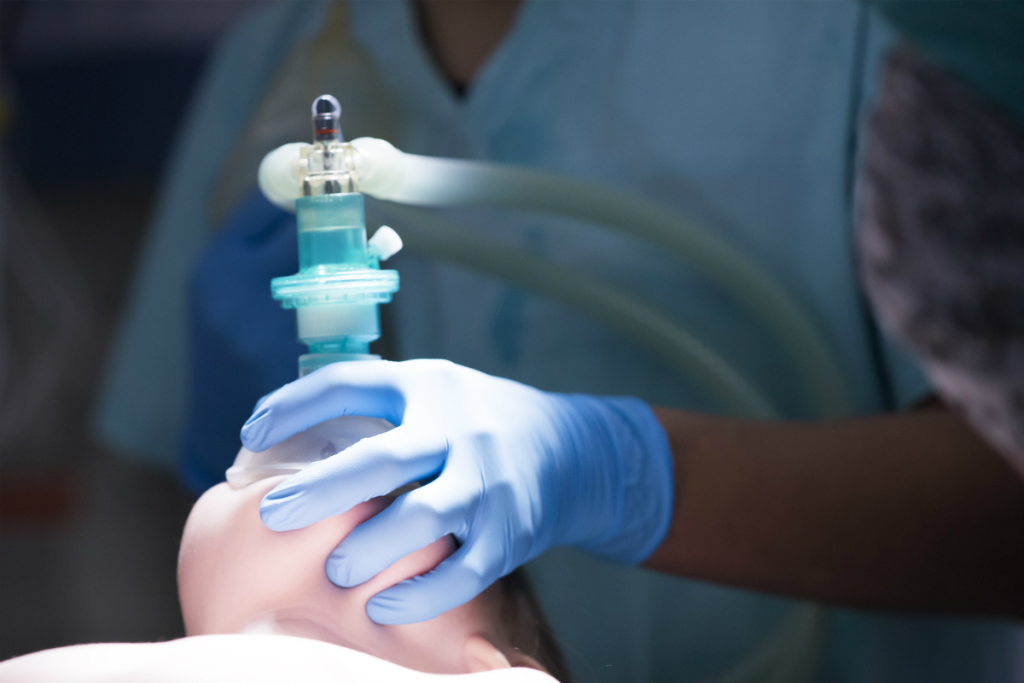Last Updated on October 21, 2025 by mcelik
Choosing the right anesthesia for surgery is a big decision. It’s a top worry for patients and their families. They want to know it’s safe.
Our team of experts helps patients pick the best anesthesia option. We consider their health, the surgery type, and what they prefer.

The safest anesthetic depends on the patient and the surgery. We’ll look at different anesthetics, their safety, and the latest research. This will help us understand which one is safest.
Modern anesthesia is a complex field. It requires a deep understanding of how anesthetics interact with our bodies. Thanks to medical research and technology, anesthesia has come a long way.

General anesthesia uses a mix of medications and gases. This ensures patients don’t feel pain during surgery. Anesthetics work by depressing the nervous system, reducing the pain response. But how anesthesia affects us can vary a lot.
Recent studies show important trends in anesthesia safety. New anesthetic agents and monitoring systems have reduced complications. These advancements have made anesthesia safer.
Anesthetic techniques have evolved a lot. Now, we focus on personalized care and advanced monitoring. Personalized anesthesia care means tailoring the anesthetic to each patient’s needs.
Some key developments include:
Understanding how anesthesia works is key. It helps us choose the right anesthesia for each patient. This personalized approach has greatly improved patient outcomes and safety.
Anesthesia comes in many forms, each with its own safety and use. The right choice depends on the procedure, the patient’s health, and personal wishes. Knowing these differences helps in making better medical choices.
General anesthesia makes you unconscious, perfect for big surgeries. But it can lead to breathing and heart problems. It’s important to pick the right patient and watch them closely to avoid these risks.
Regional anesthesia numbs a part of your body, like your legs. It includes spinal and epidural methods. It’s safer for the lungs and heart than general anesthesia, making it better for some patients.
Local anesthesia numbs a small area for minor procedures. It’s mostly safe, but the dose and area must be right to avoid harm.
Intravenous sedation relaxes and eases pain without making you sleep. It’s safe for small procedures when watched closely. The sedation level can be changed, giving flexibility.
Knowing about the safety and uses of these anesthetics helps both patients and doctors make the best choices for each person and procedure.
Regional anesthesia is becoming more popular because it’s safer than general anesthesia for many surgeries. It blocks pain in the area being operated on. This makes it safer for patients and doctors.

Regional anesthesia has a big advantage: it leads to fewer pulmonary complications. General anesthesia can harm breathing, but regional anesthesia doesn’t. This helps patients breathe better after surgery.
It also has lower cardiovascular risks than general anesthesia. Regional anesthesia doesn’t affect the whole body like general anesthetics do. This is good for people with heart problems.
Regional anesthesia works just as well as general anesthesia for many surgeries. It has the same success rate but with fewer side effects. This makes it a better choice when possible.
In summary, regional anesthesia is safer than general anesthesia. It has fewer risks for the lungs and heart, and it works just as well for surgeries. As medicine gets better, more people will choose regional anesthesia.
Intravenous sedation is now seen as a safer option for minor surgeries compared to general anesthesia. It uses medications through an IV to make patients feel calm and sleepy. This method is great for minor surgeries because it aims to reduce risks and help patients recover quickly.
Intravenous sedation has fewer hypotension events than general anesthesia. Research shows that patients under sedation have a 8.3% chance of hypotension, while general anesthesia has a 21.6% rate. This lower rate of hypotension makes sedation safer for patients, reducing the chance of complications and improving outcomes.
Intravenous sedation leads to shorter anesthesia times, which is safer. Shorter anesthesia times lower the risk of complications and help patients recover faster. This is key in outpatient settings, where quick and safe discharge is the goal.
Keeping oxygen levels safe during surgery is vital. Sedation allows for better control over oxygen levels, unlike general anesthesia. By ensuring patients get enough oxygen, we reduce the risk of hypoxia and complications, making minor surgeries safer.
In outpatient surgeries, new safety standards are being set. Fast-recovery anesthesia agents are leading this change. They make outpatient procedures safer and more efficient.
Hyperbaric prilocaine is a top choice for outpatient anesthesia. It has a fast onset and recovery profile. This means patients can quickly get back to normal, reducing risks and making discharge smoother.
The efficacy of hyperbaric prilocaine in quick recovery is proven. It boosts patient safety and happiness. This makes it perfect for outpatient surgeries.
Other fast-acting agents are also used for safety in outpatient settings. They have rapid onset and offset. This allows for precise control over anesthesia.
Using these fast-acting agents improves safety and efficiency in outpatient surgeries. Tailoring anesthesia to each patient’s needs is a big step in modern care.
Sugammadex has greatly improved anesthesia safety, mainly in surgeries needing muscle relaxation. It has changed how doctors manage muscle blockage. This is because sugammadex quickly and effectively reverses these blocks.
Sugammadex makes rapid reversal of neuromuscular blockade possible. This is key in surgeries needing muscle relaxation. It works by wrapping around the neuromuscular blockers, allowing for quick recovery and less chance of muscle weakness.
Using sugammadex leads to more consistent and safe recovery times. This is vital in the operating room, where patient safety is top priority.
Older reversal agents, like neostigmine, have slower effects and can cause side effects. Sugammadex, on the other hand, starts working faster and has fewer side effects. This is a big plus for anesthesia safety, making it easier to manage muscle blockage.
Research shows sugammadex can reverse muscle blockage much quicker than old agents. This quick action is good for patient outcomes by shortening the time muscles are blocked.
Sugammadex has a big impact on patient outcomes and anesthesia safety. It helps patients recover faster from muscle blockage. This reduces the chance of complications from long-lasting paralysis, making care safer and more satisfying for patients.
Using sugammadex also lowers the risk of breathing problems after surgery. This is a big win for anesthesia safety. It makes anesthesia care safer overall.
The safest anesthesia is chosen based on each patient’s needs and the surgery type. We look at many factors to get the best results for our patients.
A patient’s age and physical condition are key in picking the safest anesthesia. Older patients or those with physical issues might need special anesthesia care. For example, older adults might process anesthesia differently, so we adjust the doses carefully.
Patients in good health might handle certain anesthetics better than those with health problems. We check each patient’s health to pick the best anesthesia plan.
A patient’s medical history is very important for anesthesia planning. We look at conditions like diabetes, heart disease, or past bad reactions to anesthesia. We go over each patient’s medical history to spot risks and plan how to avoid them.
For instance, patients with heart issues might need more watchful care during anesthesia to avoid problems.
The surgical context and procedure type also affect anesthesia choice. Different surgeries need different levels of anesthesia. We work with surgeons to understand each surgery’s needs and tailor our anesthesia plan.
For simple surgeries, local or regional anesthesia might be better to lower risks from general anesthesia. But, more complex surgeries might need general anesthesia.
By carefully looking at these factors and the surgery type, we can give our patients the safest and most effective anesthesia care.
We’ve looked at different types of anesthesia and their safety levels. The right choice depends on the patient’s needs and the surgery. Anesthesiologists work with patients to find the safest option for them.
Healthcare providers consider many factors when choosing anesthesia. These include the patient’s age, health, and medical history. This teamwork is key to ensuring the best care for each patient.
The safest anesthesia depends on many factors. These include the patient’s health and the surgery type. Our team helps choose the best anesthesia for each patient.
Anesthesia numbs the body to prevent pain during surgery. It comes in different types, like general and local anesthesia. Each type works differently to achieve the goal.
Regional anesthesia is safer for some patients. It has fewer complications than general anesthesia. It can also offer similar surgery results with fewer risks.
Yes, for minor surgeries, intravenous sedation is safer. It has fewer risks of low blood pressure and shorter recovery times.
Fast-recovery agents, like hyperbaric prilocaine, are designed for outpatient surgeries. They reduce recovery times and side effects, making them safer.
Sugammadex has made anesthesia safer by allowing quicker recovery from muscle blockage. This improves patient safety and outcomes.
Many factors influence anesthesia choice. These include age, health, medical history, and surgery type. Each patient’s needs are considered.
Side effects of anesthesia vary by type and patient. Common ones include nausea, dizziness, and breathing problems.
Anesthesia duration varies by type and procedure. Local anesthesia wears off quickly, while general anesthesia takes longer to recover from.
Yes, discussing anesthesia options with your healthcare provider is important. It helps choose the safest and most suitable option for you.
Subscribe to our e-newsletter to stay informed about the latest innovations in the world of health and exclusive offers!
WhatsApp us